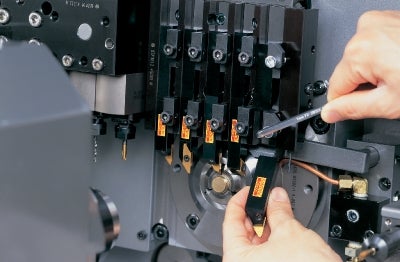Thread turning tool set-up

The tool set-up has a strong influence on the thread quality and effectiveness of threading. Number one rule is to use as short overhang as possible.
Overhang
For an optimal tool set-up, use a tool holder with as short overhang as possible to avoid vibration. We recommend to use a sub-spindle or tailstock for support if available.
Long overhangs are most common for internal thread turning. When machining with long overhangs, it is especially important to mount the bar correctly to ensure enough clamping contact. Recommended clamping length is 2.5–5 x bar diameter (D) depending on boring bar design. This will result in a stable tool set-up.
For best performance of the boring bar, the contact, design, and dimensional tolerance between tool and tool holder are important factors. The best stability is obtained with a holder that completely encases the bar. V-type bar holder and cylindrical holder with screws are not recommended.

Holder that completely encases the bar

V-type bar holder

Cylindrical holder with screws
Cylindrical boring bars and adaptors can be clamped in split sleeves. Large boring bars and adaptors can be clamped using two split bearing caps.
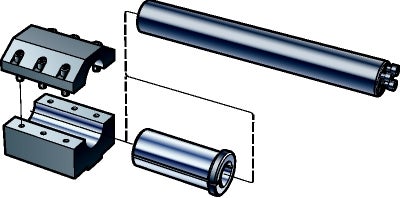
Tool assembled with split sleeve
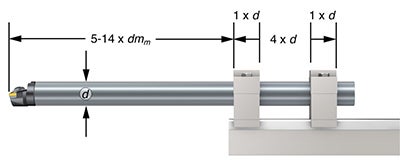
Tool fixed in two split bearing caps
Upside-down tool holders for external thread turning
In many operations, it is beneficial to use a tool holder in an upside-down position (drop-head holder), to help remove chips more effectively. Drop-head tool holders are specially developed for upside-down thread turning and allow the correct centre height to be maintained, without having to change the tool holding in the turret or using a Y-axis.
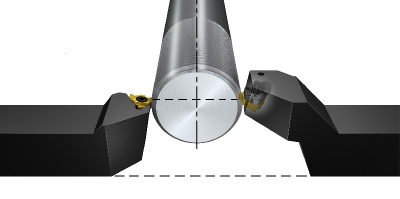
|
|||
| Conventional tool holder | Drop-head tool holder | ||
Tool holding for internal thread turning
Since the radial forces are much higher than the axial forces when thread turning, the overhang generally needs to be shorter than in general turning operations.
For internal turning operations this is even more important to consider as the overhang usually are longer, and especially for internal thread turning as the higher radial forces increases the risk of tool bend out and vibrations.
The choice of boring bar has a strong influence on the effectiveness of internal threading. Four main types can be used, depending on overhang length and the required level of stability.
Steel boring bars
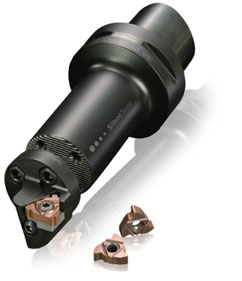
- Maximum 2–3 x bore diameter overhang
- Bar diameter 10–40 mm (0.4–1.5 inch)
Carbide boring bars
- Maximum 5 x bore diameter overhang
- Bar diameter 16 mm (0.63 inch)
Steel damped boring bars (Silent ToolsTM)
- To be used together with CoroTurn SL cutting heads
- Maximum 5 x bore diameter overhang
- Bar diameter 40, 50, 60 mm (1.5, 2.0 and 2.4 inch)
- Can also be used for parting and grooving operations
Carbide boring bars
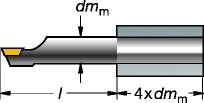
- To be used together with CoroTurn SL cutting heads
- Maximum 5 x bore diameter overhang
- Bar diameter 16, 20 and 25 mm (0.63, 0.75 and 1.0 inch)
Boring bar deflection is influenced by the boring bar material, diameter (dmm), overhang and cutting forces. The recommended clamping length in a boring bar holder with a sleeve is 4 x bar diameter.
Maintenance of thread turning tools
Establishing a routine for tool maintenance in the work shop will prevent problems and save money.
Check the insert seat
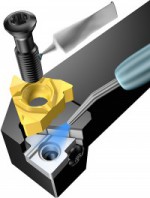
It is important to ensure that the insert seat has not been damaged during machining or handling. Make sure the insert seat is free from dust or metal chips that are produced when machining. If necessary, clean the insert seat with compressed air.
Torque wrench
To get the best performance out of screw-clamp tool holders, a torque wrench should be used to correctly tighten the insert. Use the recommended torque (TQ) for each tool holder.
- A too high torque will affect the performance of the tool negatively and cause insert and screw breakage
- A too low torque will cause insert movement, vibrations, and degrade the cutting result
Clamping screws
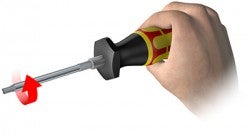
Apply sufficient screw lubrication to prevent the screw from seizing. Lubricant should be applied to the screw thread as well as the screw head face. Replace worn or damaged screws.
Tool holding
Coromant Capto® is a modular quick change tooling concept which when directly integrated in the spindle increases stability and versatility in, for example, multi-task machines, machining centres with turning capability and vertical lathes.

Silent ToolsTM adaptors are designed to minimize vibration through a dampener inside the tool. The majority of Silent ToolsTM customers’ use these tools for long overhangs. However, even with shorter overhangs (3 x D), large productivity increases and surface quality improvements are to be gained.
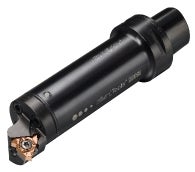
EasyFix sleeves are a set-up time reducing solution for cylindrical adaptors. A spring plunger mounted in the sleeve clicks into a groove in the bar to guarantee the correct centre height. EasyFix sleeves are designed for high coolant pressure.
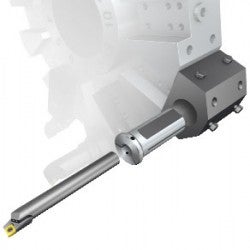
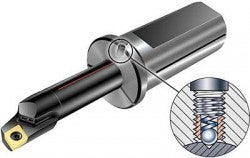
CoroTurn® SL is a modular system of adaptors with exchangeable cutting heads that allow you to create a wide range of tool combinations from a small inventory.
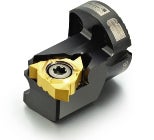
The QSTM holding system is a quick change tool holder to maximize effective production time in sliding head machines.
